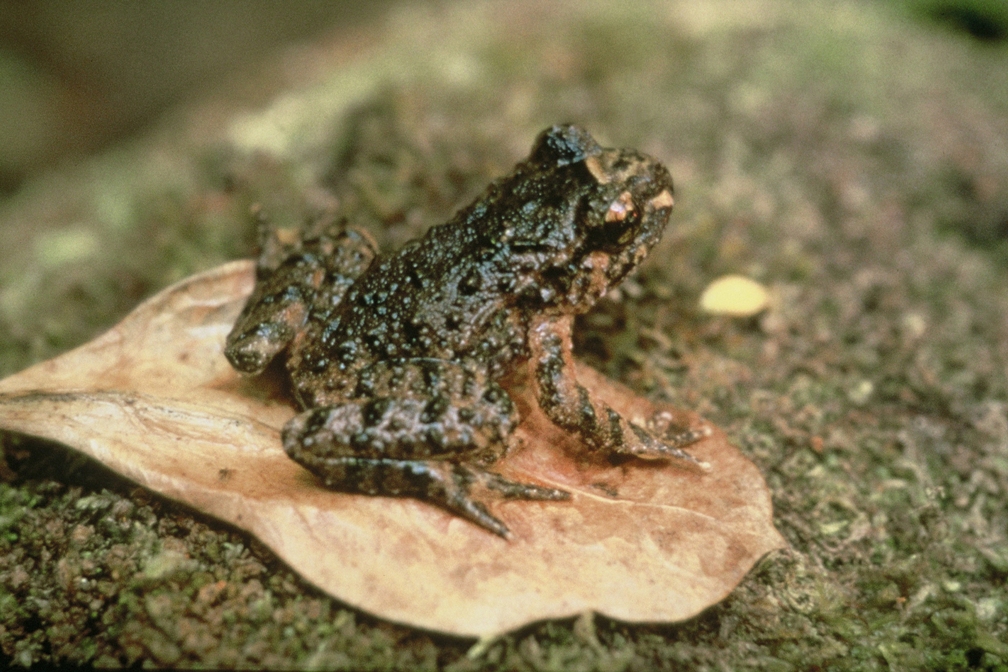Tiny Frog Prompts Big Interest
A timewarp of 20 million years was experienced by a gathering of more than 60 people at KIWI 360 in Te Puke on Monday evening.
The local Forest & Bird Branch hosted the meeting to make people aware of the rare Hochstetter’s frog living in the hills behind the town. The frog was discovered on one of their field trips in 1992 and the Branch has been working to gain protection for the frog and its habitat ever since. The land is now administered by Department of Conservation and until recently had been quarried for 50 years for decorative stone and road metal.
Chairing the meeting, Pim de Monchy, Kaituna Catchment Manager for Bay of Plenty Regional Council, said the Council was keen to give biodiversity projects in the area support and funding.
John Heaphy, Department of Conservation officer from Tauranga, explained his role as specializing in protected species and offshore islands and gave a very comprehensive and fascinating talk about Leiopelma Hochstetteri Otawa (our local frog) and its genealogy.
The frog Leiopelma is found only in New Zealand and of the seven known species. Three are already extinct. Their history extends into the early Jurassic period and since that time they have evolved with not much change, making them the most primitive frogs in the world. Some of their remarkable characteristics include no external ears, no croak, no tadpole stage, male care of eggs and tiny frogs, long life (30+ years) slow breeding, nocturnal habits and great camouflage.

Hochsetter’s Frog (Photo by G Shirley)
Of the four species still surviving (Archey’s, Maud Island, Hamiltons, Hochstetter’s) only Hochstetter’s frogs live on the edges of native forest streams, the other three being terrestrial frogs that need damp conditions like high ridges that are often covered in cloud.
The total population of approximately 1000 Hochstetters frogs is divided into 19 separate species and scientific study has shown that the Otawa frog is genetically distinct. It has the highest threat rating of all our native frogs, being critical – close to extinction. Because they are so small and live in rocky habitat the frogs are extremely vulnerable to disturbance and it is vital that their living space is totally protected.
The geology of the Otawa frog habitat is vital to its survival over the centuries. Old andecite deposits that are 2-3 million years old fragment into loose thin slabs of rock that make ideal habitat for these tiny frogs. Much of the geology of the Bay of Plenty has been affected by volcanic action and the more recent ignimbrite flows cover large areas and do not provide ideal frog habitat.
The 400 hectares surrounding the frog habitat need protection from any further disturbance and DOC has proposed a sanctuary designation. The proposed Otawa Sanctuary Area is a vital part of the wildlife corridor which extends from Otanewainuku through Oropi forest to Otawa Scenic Reserve.
This proposal is open for public submission in the next few days. Submissions are due 23 November. They can be emailed to djwakelin@doc.govt.nz or sent to Dinah Wakelin, Department of Conservation, PO box 5244, Dunedin 9058.
Alternatively, you can:
